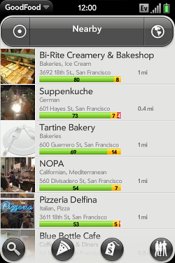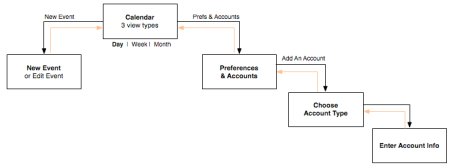Palm reconnects smartphone with iTunes, debuts SDK
Jul 27, 2009 — by Eric Brown — from the LinuxDevices Archive — 1 views After Apple blocked the Palm Pre from being able to sync to its iTunes music software, Palm released a Palm WebOS 1.1 update that reconnects Pre users to ITunes, says eWEEK. Meanwhile, Palm has released its Palm Mojo SDK for the Linux-based WebOS.
After Apple blocked the Palm Pre from being able to sync to its iTunes music software, Palm released a Palm WebOS 1.1 update that reconnects Pre users to ITunes, says eWEEK. Meanwhile, Palm has released its Palm Mojo SDK for the Linux-based WebOS.
On July 15, after warning it would do so, Apple updated iTunes to a version 8.2.1 that effectively blocked users of the Palm Pre smartphone from accessing the popular music player. Last week, however, Palm responded with its own WebOS 1.1 update, once again enabling iTunes access using the Pre's touted media sync features, according to an eWEEK story. The feature is said to enable Palm Pre users to synchronize with iTunes 8.2.1 and transfer DRM-free music, photos, and video onto the Pre smartphone.
The WebOS 1.1 update is also said to have enhanced support for Exchange ActiveSync, including remote wipe, PIN/password requirements, inactivity timeout, and improved certificate handling. Beyond these business-oriented features, the release adds support for emoticons in the messaging app, the ability to set "person reminders" in the contacts app, and a new NFL Mobile Live app from Sprint offering audio and video of live NFL football games, says eWEEK.
Will Apple risk a lawsuit?
Yesterday, in a follow-up story in eWEEK, Nathan Eddy quotes an analyst saying that Palm's continuing escalation of the iTunes "cat-and-mouse game" (or perhaps Whac-a-Mole would be a better analogy) could lead to legal action from Apple.
Eddy quotes Endpoint Technologies analyst Roger Kay as saying he expected that Apple might next respond with a cease and desist letter. A lawsuit might be risky for Apple, Kay was said to have added. If Apple were to lose, it could create a precedent for opening its platforms, he noted.
However, Apple is likely to "escalate a bit at a time and gradually raise the stakes," Kay was quoted as saying. "They're not going to give up easily, but would they go another round of cat-and-mouse? Probably not."
The speed with which Palm was able to reconnect to iTunes is likely due to Palm employing so many former Apple developers and executives who have a deep understanding of iTunes architecture, Kay was said to have noted. The decision to keep fighting back against Apple, meanwhile, may well be due to "emotions about being cut out of the action at Apple," among these former Apple execs, suggested Kay.
"It's not really sound business to approach it that way, but this business allows emotions to get swayed," Kay was quoted as saying. In the end, Palm Pre users could suffer, he added, because "after awhile, the software isn't operating very well."
Pre SDK available
The much-praised WebOS Linux distribution behind the Palm Pre may not be completely open source, but Palm has published open source portions of the stack, and has now published an SDK. The Palm Mojo Software Development Kit (SDK) was made available on July 15, some six weeks after the launch of the smartphone, along with documentation and Mojo developer forums, says Palm.


WebOS sample apps: FlightView (left) and GoodFood
(Click on either to enlarge)

Stages and scenes in WebOS development, using simple Calendar example app [Source: Palm]
(Click to enlarge)
Availability
Nathan Eddy's eWEEK analysis of Palm's iTunes counter-move to Apple may be found here, and Darryl Taft's eWEEK story last week about WebOS 1.1 should be here.
A Palm page showing highlights of WebOS 1.1 may be found here, and the WebOS developer site with download links for the Palm Mojo SDK may be found here.
This article was originally published on LinuxDevices.com and has been donated to the open source community by QuinStreet Inc. Please visit LinuxToday.com for up-to-date news and articles about Linux and open source.